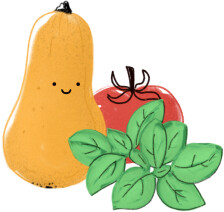Christrose, Lenzrose Standardsorte

Variety
Christrose, Lenzrose Standardsorte
created by Alex&Sempi at 22.02.2025
Features
Location
planting: outdoor
Soil: permeable soil
soil moisture: no waterlogging
Fertilization: single dose of compost
Fertilization: nutrient-rich
fertilization: humus-enriched
Soil: Well fertilized
soil moisture: moist
Soil: slightly sandy
Soil: slightly loamy
Light: Semi-Shade
Soil: medium-heavy
Water: regularly
soil moisture: not too dry
Planting: edge of wooded areas or beneath trees
Growth habit
flower: flowering
seed-fixed: yes
self-seeding
root type: deep-rooted
leaves: evermoist
Resistances
Winter hardy
Taste
not edible
Season Overview
Propagating
Planting
Harvest
Harvest
J
F
M
A
M
J
J
A
S
O
N
D
1ST YEAR
FOLLOWING YEARS
Description
The Christmas rose (Helleborus niger) is also known as the snow rose or black hellebore and delights in winter with its elegant white flowers. Other Helleborus species are often referred to as Christmas roses, which can lead to all kinds of confusion, as some of them flower at different times. However, Helleborus niger is the classic Christmas rose because it blooms around Christmas. Other species, such as the spring-flowering Helleborus Orientalis hybrids, are known as spring roses. For some years now, newer cultivars with early, sometimes multi-colored flowers have also been on the market under the name snow rose. The Christmas rose is a winter-green, perennial herbaceous plant that belongs to the buttercup family (Ranunculaceae). The perennial can grow to a height of between 20 and 30 centimetres and can live up to 25 years in suitable places in the garden. The flower of the Christmas rose reaches a diameter of between five and ten centimetres - it is usually terminal and solitary on the stem. The white perianth, which can also have a pink tinge when it fades depending on the variety, is made up of five egg-shaped sepals. Numerous yellow stamens are arranged in a spiral on the elongated flower axis. The main flowering period of the Christmas rose is from December to March, but this can vary depending on the location, variety and altitude. For example, there are also cultivars that show their first flowers as early as November and are available as pre-grown plants in pots, especially at Christmas time. Its deep green leaves are divided into seven to nine sections. The individual sections are lanceolate in shape and have whole or toothed leaf edges. There are two to three frost-sensitive bracts on the lower part of the stem, which are protected by snow, leaves or soil in winter. The natural distribution area of the wild Christmas rose includes the eastern northern and southern Alps. The plant is also found in the Apennines and the northern Balkans. There it grows at altitudes of up to 1900 meters. In Germany, the plant species is only native to Bavaria, but is more common in Austria and Switzerland. Christmas roses prefer bushy slopes, sparse beech and mixed beech forests as their natural habitat, but they can also be found in spruce and oak forests. Lenz roses (Helleborus Orientalis hybrids) are the result of crosses between the wild Lenz rose (Helleborus orientalis), also known as the Oriental hellebore, and various other species of the genus Helleborus. The former has its natural range in the Near East from Turkey to the Caucasus. The name Orientalis hybrids has become established, although many varieties now have more than two parent species and should therefore, strictly speaking, simply be referred to as Helleborus hybrids. For example, it is becoming increasingly difficult to distinguish between the newer Christmas rose cultivars (Helleborus niger) and the modern Orientalis hybrids. In contrast to the white-flowering Christmas roses or snow roses (Helleborus niger), with which the Orientalis hybrids are often confused anyway, Lenz roses are extremely uncomplicated and long-lived. In addition to their long flowering period, Lenz roses are appreciated for the variability of their petals with different colors and patterns. A single plant can combine the characteristics of different wild species. The genus Helleborus is also popularly known as hellebore. The powdered rhizome of the plants was once used to make sneezing powder or snuff, which was said to dispel dizziness and strengthen the memory. As early as 300 B.C., the lentisk was mentioned in herbal books, because even then people were aware of its healing properties, but also its toxicity. Among other things, the rhizome was used in powder form as a heart-strengthening and urine-promoting agent. People who are easily allergic should be careful when cutting the flower stalks, as the sap released can cause severe skin irritation.
F1 Hybrid
Not frost resistant
Growing tips
The Christmas rose is hardy and thrives in nutrient and humus-rich soil that is neither too dry nor waterlogged. The perennial feels particularly at home in an alkaline to neutral location with a high lime content. Poor, sandy soils should therefore be prepared. In autumn, for example, the soil can be improved by adding compost, organic fertilizer or a layer of mulch. In addition to the necessary humus, you should also work some grit into the soil. With the help of earthworms, the soil is well aerated and contains sufficient nutrients. Once planted correctly and provided with sufficient organic fertilizer, the plant will thrive for decades. Christmas roses do not need to be replanted - in the right place they even become more beautiful every year.
Details
Light requirement
Semi-shaded
Water requirement
Moist
Soil
Medium (loamy)
Nutrient requirement
High
Light germinator
Plant distance
50 cm
Row spacing
50 cm
Seeding depth
0.2 cm
Companion Plants
Antagonistic Plants
Diseases
Root Rot
Black spot of roses
Powdery mildews
Pests
Land snails
Aphids